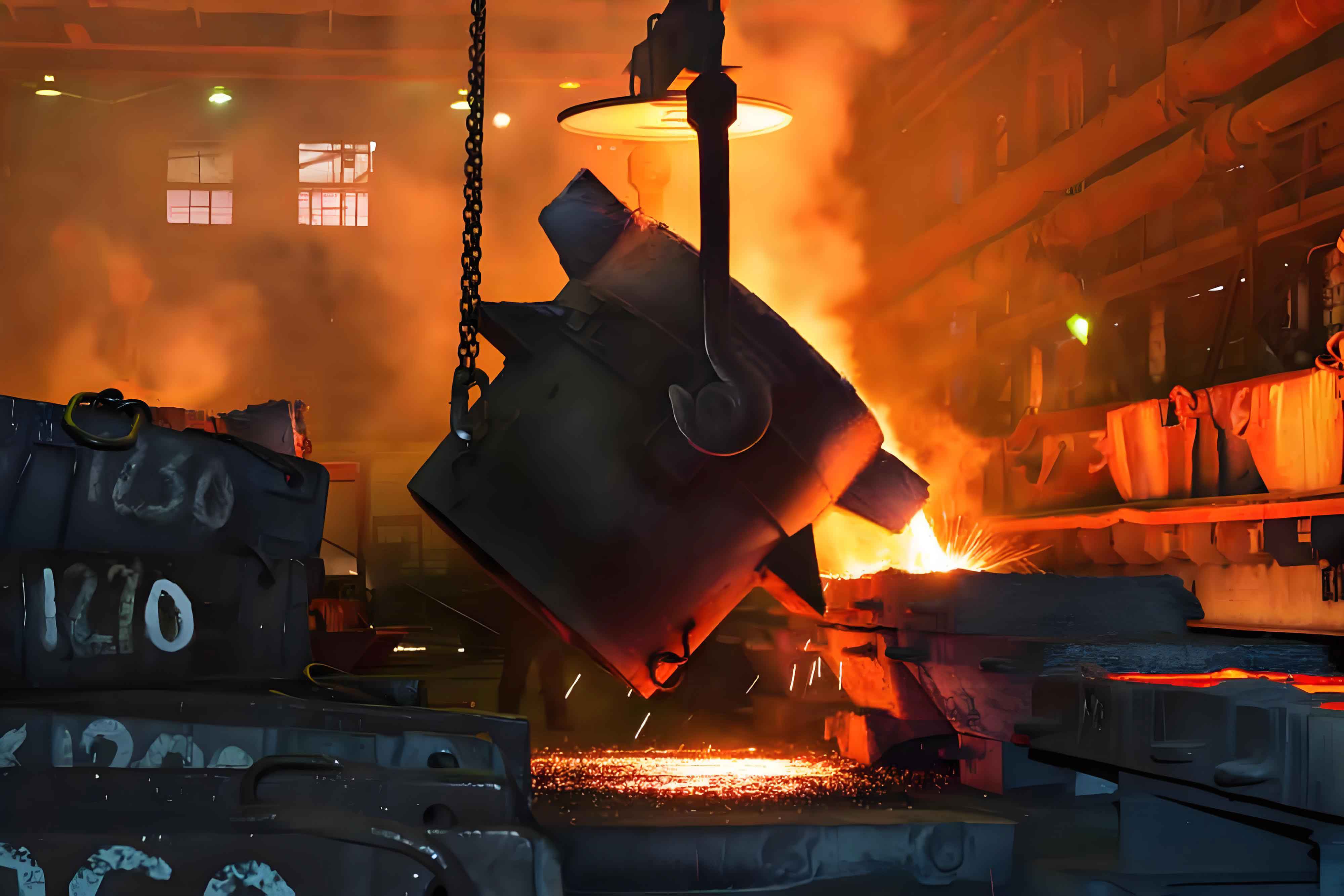Grey cast iron remains widely used in engine cylinder blocks due to its excellent vibration damping, wear resistance, and casting properties. This study systematically investigates the effects of alloying elements (Cu, Cr), multi-component alloy additives, impurity elements (Ti), and inoculants on the mechanical properties, microstructure, and machining performance of grey cast iron. A novel three-axis calibration device for cutting force measurement was developed to ensure measurement accuracy.
1. Calibration Methodology for Cutting Force Measurement
A three-axis force calibration system was designed using standard weights to establish precise linear relationships between strain signals and cutting forces. The calibration equations for orthogonal cutting forces ($F_x$, $F_y$, $F_z$) were determined as:
$$F_x = 40.3\varepsilon_x – 38.2$$
$$F_y = 51.1\varepsilon_y – 33.4$$
$$F_z = 109.5\varepsilon_z – 7.8$$
where $\varepsilon$ represents strain readings. The resultant cutting force was calculated using:
$$F_{\text{合}} = \sqrt{F_x^2 + F_y^2 + F_z^2}$$
| Condition | ΔFz (%) | ΔF合 (%) |
|---|---|---|
| Tool Reset | 1.45 | 1.92 |
| Insert Replacement | 1.83 | 2.15 |
| Tool Holder Reinstallation | 11.2 | 13.4 |

2. Effects of Alloying Elements on Grey Cast Iron
The chemical composition and mechanical properties of experimental grey cast iron specimens are shown below:
| Specimen | C | Si | Cu | Cr | UTS (MPa) | Hardness (HB) |
|---|---|---|---|---|---|---|
| 1 | 3.17 | 1.74 | – | – | 281 | 205 |
| 2 | 3.15 | 1.87 | 0.54 | – | 311 | 212 |
| 3 | 3.25 | 1.81 | 0.19 | 0.20 | 304 | 216 |
| 4 | 3.22 | 1.80 | 0.57 | 0.20 | 319 | 211 |
Cu-Cr co-alloying demonstrated superior performance with 12.9-17.3% reduction in cutting forces compared to pure Cu addition. The relationship between cutting depth ($a_p$) and resultant force was established:
$$F_{\text{合}} = 238.7a_p^{0.89} + 412.3$$
3. Multi-Component Alloy Additives
A cost-effective alloy additive (38.7% Cr, 13.5% Si, 8.5% Mn, 5.3% RE) showed comparable performance to Cu-alloyed grey cast iron:
| Parameter | Cu Alloy | Multi-Alloy |
|---|---|---|
| UTS (MPa) | 305 | 316 |
| Hardness (HV) | 306 | 306 |
| Cutting Force (N) | 1,369 | 1,132 |
4. Influence of Titanium Impurities
Ti content significantly affected machining performance:
$$ \Delta F_{\text{合}} = 0.89[Ti]^2 + 4.67[Ti] + 927.3 $$
where [Ti] represents titanium concentration in wt%. Low-Ti specimens (0.021% Ti) showed 4.09% lower cutting forces than standard specimens (0.049% Ti).
5. Inoculation Effects on Machinability
Four inoculants were evaluated for HT350-grade grey cast iron:
| Inoculant | UTS (MPa) | Cutting Force (N) | Graphite Size (μm) |
|---|---|---|---|
| 75FeSi | 385 | 730 | 120-150 |
| SrSi | 376 | 699 | 80-110 |
| BaSi | 376 | 742 | 150-180 |
| SrSi+FeSi | 356 | 689 | 60-90 |
The SrSi+FeSi composite inoculant produced the finest graphite structure (60-90 μm) with optimal machining performance, following the relationship:
$$ F_{\text{合}} \propto \frac{1}{\sqrt{d_{\text{graphite}}}} $$
where $d_{\text{graphite}}$ represents average graphite flake size.
6. Conclusion
This comprehensive study demonstrates that grey cast iron’s machinability can be significantly improved through optimized alloying and inoculation strategies. Key findings include:
1. Cu-Cr co-alloying reduces cutting forces by 12.9-17.3% compared to single-element addition
2. Multi-component alloy additives decrease tool wear by 23% versus traditional Cu alloying
3. Ti content below 0.03% improves cutting performance by 4.09%
4. Composite inoculation (80% SrSi + 20% FeSi) achieves finest graphite structure (60-90 μm) with 18% force reduction
The developed three-axis calibration methodology provides ±1.5% measurement accuracy, enabling reliable evaluation of grey cast iron’s machining characteristics. These findings establish a scientific foundation for producing high-performance engine components with improved manufacturability.
